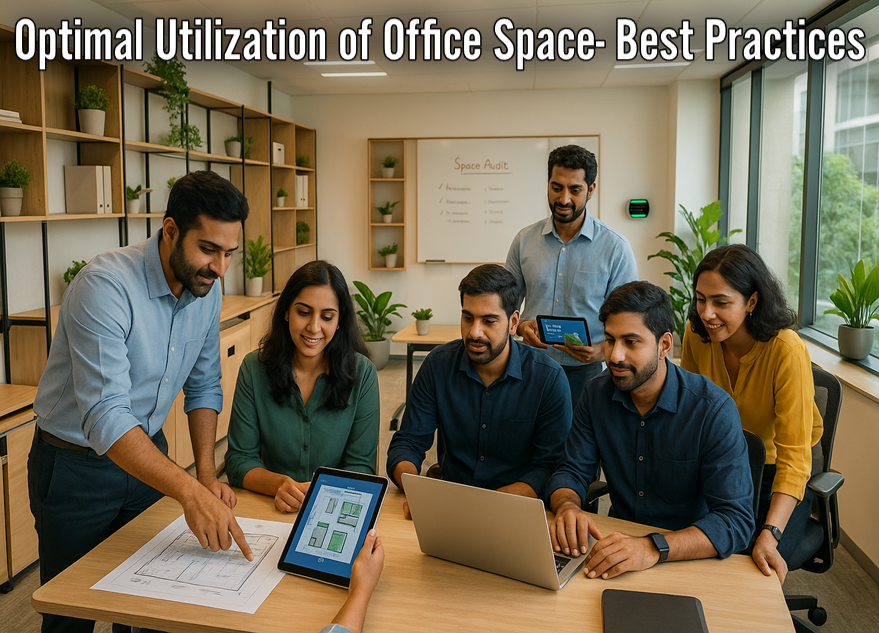The gig economy in India is rapidly growing, offering flexibility and independence to professionals across various sectors. Freelancers, startups, and entrepreneurs increasingly seek dynamic work environments that match their needs. Coworking spaces in India have emerged as a perfect solution, bridging the gap between traditional offices and remote work. Read this blog post to examine how coworking spaces empower the gig economy in India.
💡 Are you looking for Coworking space in Gurgaon, Noida or Delhi? We are just a call away.
Call Now: 08999 828282
10 Best Information on How Coworking Spaces Empower the Gig Economy in India
- Affordable Workspace Options
- Flexible Membership Plans
- Networking Opportunities
- Access to Premium Amenities
- Encouraging Innovation
- Enhanced Work-Life Balance
- Location Advantages
- Skill Development Opportunities
- Fostering a Community Feel
- Scalability for Startups
1. Affordable Workspace Options
Coworking spaces offer cost-effective solutions compared to renting a traditional office. This is particularly beneficial for freelancers and startups with limited budgets. These spaces eliminate overhead costs such as utilities and maintenance, making them ideal for gig economy workers.

2. Flexible Membership Plans
Gig economy professionals value flexibility. Coworking spaces in India provide various membership plans, such as hourly, daily, or monthly options, allowing freelancers and startups to choose plans that align with their schedules and work requirements.
3. Networking Opportunities
Coworking spaces for startups and freelancers foster collaboration by bringing together professionals from diverse industries. This environment helps build networks, exchange ideas, and even find potential clients or collaborators, essential for success in the gig economy.
Also Read: The Psychological Advantages of Coworking Spaces
4. Access to Premium Amenities
Unlike working from home or a café, coworking spaces offer access to premium amenities such as high-speed internet, conference rooms, ergonomic furniture, and printing services. These features enhance productivity and provide a professional environment for client meetings.
5. Encouraging Innovation
Coworking spaces for entrepreneurs are designed to spark creativity. The open layouts, modern interiors, and collaborative vibe encourage innovation and out-of-the-box thinking, essential for gig workers aiming to stay competitive.
6. Enhanced Work-Life Balance
Freelancers and gig workers often struggle to maintain a boundary between work and personal life. Coworking spaces help separate professional and personal spaces, fostering better work-life balance and mental well-being.
7. Location Advantages
Coworking spaces in India are often strategically located in prime business hubs, offering easy access to public transport and clients. This convenience makes them ideal for gig economy workers needing to meet clients or attend events.
8. Skill Development Opportunities
Many coworking spaces host workshops, training sessions, and networking events. These activities provide gig economy professionals with opportunities to upskill and stay updated with industry trends.
💡 Are you looking for Coworking space in Gurgaon, Noida or Delhi? We are just a call away.
Call Now: 08999 828282
9. Fostering a Community Feel
Working independently can often feel isolating. Coworking spaces create a sense of belonging by offering a community of like-minded professionals. This support system can boost morale and motivation.
10. Scalability for Startups
Coworking spaces for startups allow businesses to scale up or down effortlessly. Startups in the gig economy can begin with a single desk and expand as their team grows, without the long-term commitments of traditional leases.
Coworking spaces are revolutionizing the gig economy in India by offering affordable, flexible, and well-equipped work environments. They empower freelancers and gig workers with networking opportunities and professional infrastructure. The Office Pass (TOP) stands out as a top choice, providing vibrant spaces tailored to your needs. Take your gig career to the next level with TOP. Contact 08999 828282 today to book your space!
FREQUENTLY ASKED QUESTIONS (FAQS):
Question: What is the gig economy in India, and why is it growing?
Answer: The gig economy in India is a labor market where people work on short-term or freelance contracts instead of permanent jobs. It’s growing because of increased internet access, flexible work preferences, and the rise of platforms connecting freelancers to clients.
Question: How do coworking spaces in India benefit the gig economy workforce?
Answer: Coworking spaces provide affordable, professional environments with essential amenities like Wi-Fi, meeting rooms, and networking opportunities. These spaces help gig workers stay productive and connected.
Question: Why are coworking spaces ideal for freelancers in India?
Answer: Coworking spaces for freelancers offer flexible plans, creative environments, and the chance to meet other professionals. This is ideal for freelancers who might otherwise work in isolation.
Question: Can coworking spaces support startups in the gig economy?
Answer: Yes, coworking spaces for startups provide cost-effective office solutions, making it easier for small teams to operate without committing to expensive leases. They also offer opportunities for collaboration and mentorship.
Question: What are the advantages of coworking spaces for entrepreneurs in India?
Answer: Coworking spaces for entrepreneurs provide a professional image, access to resources, and networking with like-minded individuals. They reduce the overhead costs of traditional office setups.
Question: How does coworking empower the gig economy workforce?
Answer: Coworking spaces empower the gig economy workforce by offering a structured work environment, fostering community, and helping individuals focus on their tasks without distractions at home.
Question: Are coworking spaces affordable for freelancers and gig workers in India?
Answer: Yes, many coworking spaces in India offer flexible pricing plans, including hourly or daily passes, making them affordable for freelancers and gig workers.
Question: What role do coworking spaces play in enhancing productivity?
Answer: Coworking spaces enhance productivity by offering quiet, well-equipped environments that minimize distractions. Many workers find they can focus better than they would at home or in cafes.
Question: How do coworking spaces in India help with networking?
Answer: Coworking spaces in India host events, workshops, and social gatherings. These activities help freelancers, entrepreneurs, and gig workers connect and collaborate with others.
Question: Are coworking spaces suitable for part-time gig workers?
Answer: Absolutely! Coworking spaces offer flexible plans that suit part-time gig workers. They can use these spaces only when needed, avoiding unnecessary expenses.









